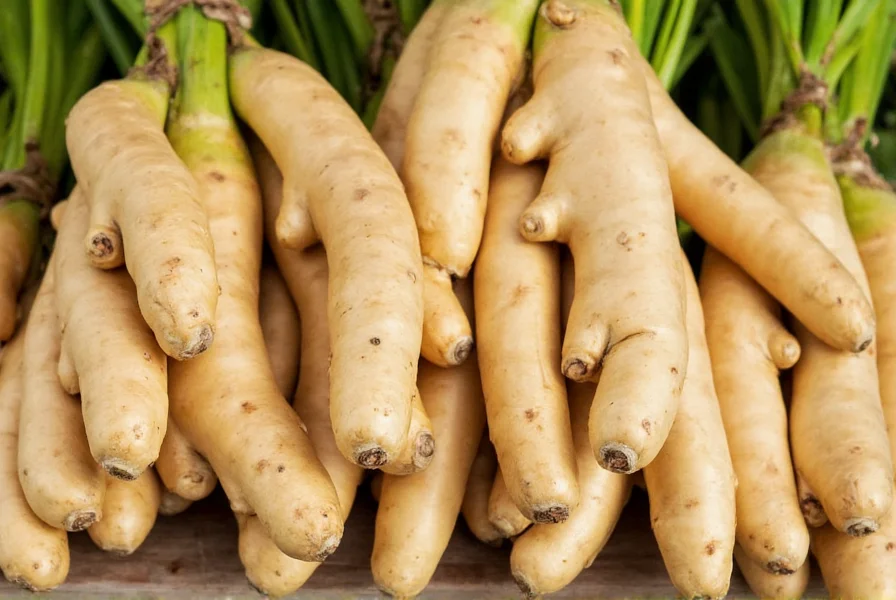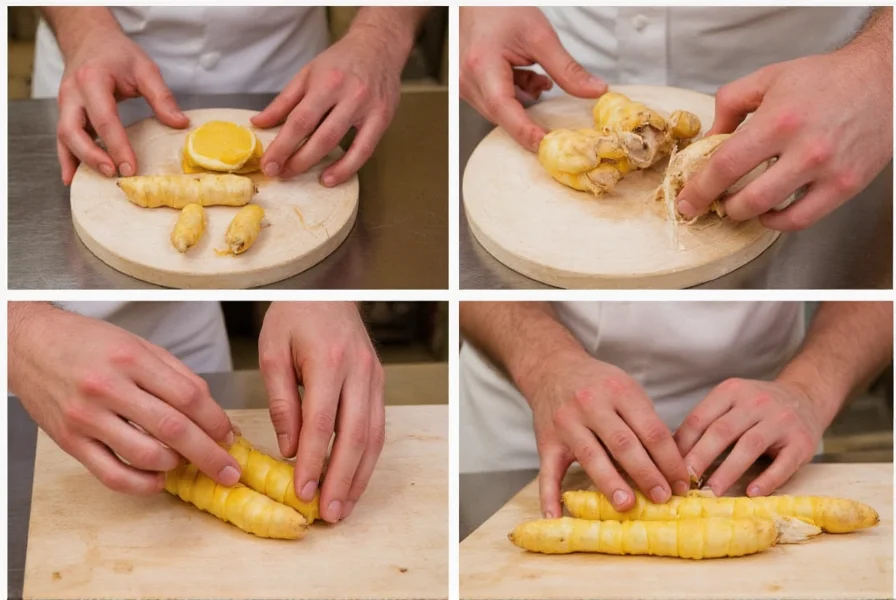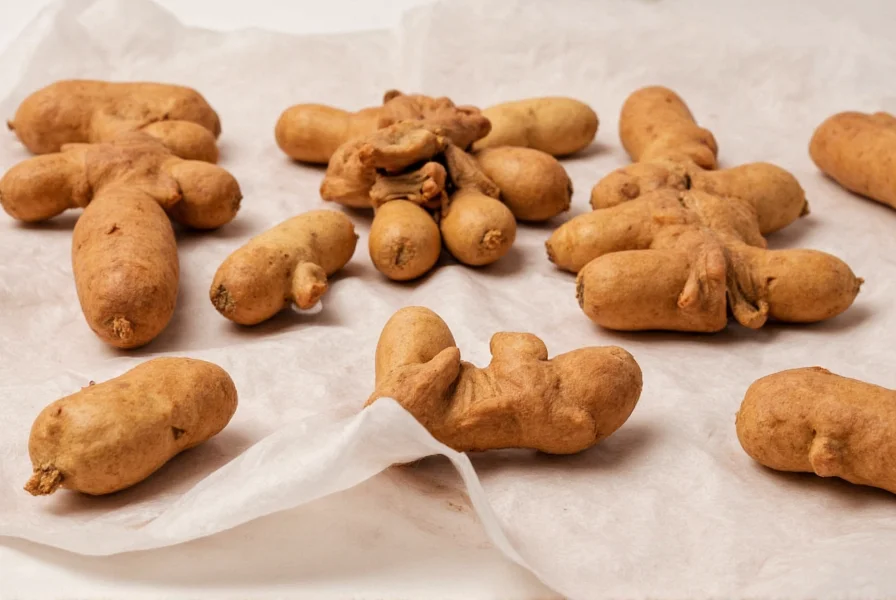When shopping for fresh ingredients, understanding what you're purchasing makes all the difference in your culinary creations. Ginger bundles represent one of the most practical ways to buy fresh ginger root while preserving its flavor profile and shelf life. Unlike pre-peeled or ground ginger, these natural groupings maintain the root's integrity from farm to kitchen.
What Exactly Are Ginger Bundles?
Ginger bundles consist of multiple ginger rhizomes (often called “fingers”) that remain connected at their base. These natural groupings typically contain 3-5 individual pieces ranging from 2-6 inches in length. The bundles form as the ginger plant grows underground, with new rhizomes branching from a central node.
Commercially, these connected pieces are harvested together and often secured with twine or natural fiber to maintain their grouping. This presentation serves multiple purposes: it helps consumers identify fresh ginger (as separated pieces often indicate older stock), simplifies handling for retailers, and preserves moisture better than individual pieces.
Advantages of Choosing Ginger Bundles Over Loose Ginger
When comparing fresh ginger bundles versus loose ginger pieces, several distinct advantages emerge for the bundled format:
- Extended freshness - The connected structure helps retain moisture longer than separated pieces
- Better quality assessment - You can evaluate multiple pieces simultaneously for firmness and mold
- Natural presentation - Shows the ginger's original growth pattern, indicating proper harvesting
- Reduced waste - Less handling means fewer damaged pieces compared to individually sold ginger

Selecting High-Quality Ginger Bundles
Not all ginger bundles offer equal quality. When choosing ginger bundles at the grocery store, look for these characteristics:
| Quality Indicator | What to Look For | What to Avoid |
|---|---|---|
| Texture | Firm, smooth skin with slight sheen | Soft spots, wrinkles, or shriveled appearance |
| Color | Bright tan to light brown | Dull grayish hue or dark spots |
| Moisture | Slightly damp but not wet | Excess moisture or visible mold |
| Connections | Intact natural connections between fingers | Cut or broken connections with dried ends |
Proper Storage Techniques for Ginger Bundles
Understanding how to store ginger bundles properly significantly extends their usable life. Unlike individual ginger pieces that dry out quickly, intact bundles maintain moisture better when stored correctly:
The optimal storage method involves placing the entire bundle in a paper bag with one end open, then storing it in the vegetable crisper drawer of your refrigerator. This approach maintains proper humidity levels while allowing slight air circulation. Properly stored ginger bundles typically remain fresh for 2-3 weeks, compared to 7-10 days for separated pieces.
For longer-term storage, consider freezing the entire bundle. Simply place the ginger in an airtight container or freezer bag. Frozen ginger bundles can last up to six months, and you can grate frozen ginger directly into recipes without thawing.
Culinary Applications of Ginger Bundles
Ginger bundles offer versatility across numerous culinary traditions. The connected structure provides different flavor intensities across the bundle, with younger “fingers” offering milder flavor and older sections delivering more pungent heat.
When cooking with ginger bundles, consider these applications:
- Asian cuisine - Use younger sections for delicate broths and older pieces for stir-fries
- Baking - Older, more fibrous sections work well grated into gingerbread or cookies
- Beverages - Slice thin pieces from the bundle for fresh ginger tea or cocktails
- Preserving - The entire bundle can be pickled or candied while maintaining visual appeal

Preparing Ginger from Bundles
One advantage of using ginger bundles in cooking is the ability to access varying intensities of flavor from a single purchase. Here's how to maximize your bundle:
- Separate individual fingers as needed rather than cutting the entire bundle at once
- Use a spoon to peel ginger - this removes minimal flesh while accessing the flavorful layer just beneath the skin
- For young, tender sections, consider using unpeeled in teas or broths
- Store separated pieces in a small container with a damp paper towel in the refrigerator
The central node where fingers connect often contains the most concentrated flavor and can be reserved for dishes requiring intense ginger presence. This approach minimizes waste while maximizing flavor potential across your culinary projects.
Ginger Bundles Compared to Other Ginger Forms
While fresh ginger bundles versus ground ginger presents a clear freshness advantage, understanding all available options helps informed decision-making:
- Ginger paste - Convenient but often contains preservatives and lacks the bright flavor of fresh
- Candied ginger - Sweetened preparation better suited for desserts than savory dishes
- Ginger powder - More concentrated but loses volatile compounds that provide fresh ginger's distinctive aroma
- Ginger juice - Excellent for beverages but lacks the textural element of fresh ginger
For most culinary applications requiring authentic ginger flavor, the bundle format provides the best balance of convenience, freshness, and versatility.
Frequently Asked Questions
Can you eat the entire ginger bundle without separating the fingers?
Yes, you can use the entire ginger bundle without separating the fingers for certain applications like steeping in teas or simmering in broths. The connected structure actually helps contain the ginger during cooking and makes removal easier. However, for most precise culinary applications, separating individual fingers allows better control over ginger quantity and intensity.
How do you know when a ginger bundle has gone bad?
Signs that a ginger bundle has spoiled include soft, mushy spots; visible mold growth (white, green, or black); a sour or musty smell; and significant wrinkling or shriveling. If only one finger shows signs of spoilage while others remain firm, you can cut away the affected portion and use the remaining healthy sections.
Are ginger bundles more expensive than buying loose ginger?
Ginger bundles typically cost slightly more per pound than loose ginger pieces, but they often represent better value due to reduced waste and longer shelf life. The natural grouping helps maintain freshness, meaning you're less likely to discard spoiled ginger. When calculating cost per usable serving, ginger bundles frequently prove more economical despite the slightly higher initial price.
Can you grow new ginger plants from store-bought bundles?
Yes, you can propagate ginger from store-bought bundles. Choose a bundle with multiple plump fingers and visible growth nodes (the small bumps on the skin). Plant one finger horizontally in well-draining soil with the growth nodes facing up. Keep the soil consistently moist in a warm, partially shaded location. While store-bought ginger may have been treated to prevent sprouting, many bundles will successfully grow new plants with proper care.











 浙公网安备
33010002000092号
浙公网安备
33010002000092号 浙B2-20120091-4
浙B2-20120091-4